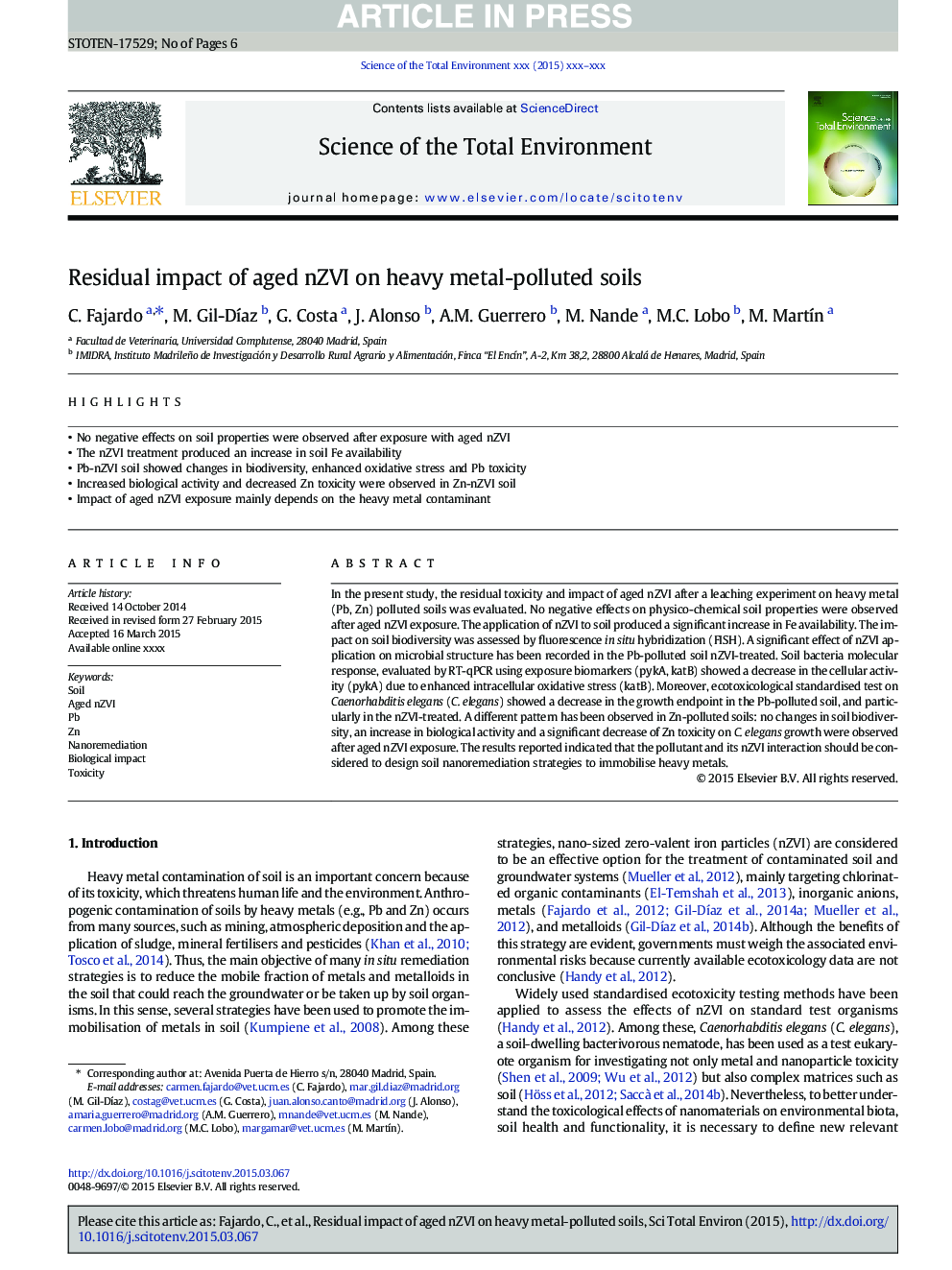| Article ID | Journal | Published Year | Pages | File Type |
|---|---|---|---|---|
| 6326156 | Science of The Total Environment | 2015 | 6 Pages |
Abstract
In the present study, the residual toxicity and impact of aged nZVI after a leaching experiment on heavy metal (Pb, Zn) polluted soils was evaluated. No negative effects on physico-chemical soil properties were observed after aged nZVI exposure. The application of nZVI to soil produced a significant increase in Fe availability. The impact on soil biodiversity was assessed by fluorescence in situ hybridization (FISH). A significant effect of nZVI application on microbial structure has been recorded in the Pb-polluted soil nZVI-treated. Soil bacteria molecular response, evaluated by RT-qPCR using exposure biomarkers (pykA, katB) showed a decrease in the cellular activity (pykA) due to enhanced intracellular oxidative stress (katB). Moreover, ecotoxicological standardised test on Caenorhabditis elegans (C. elegans) showed a decrease in the growth endpoint in the Pb-polluted soil, and particularly in the nZVI-treated. A different pattern has been observed in Zn-polluted soils: no changes in soil biodiversity, an increase in biological activity and a significant decrease of Zn toxicity on C. elegans growth were observed after aged nZVI exposure. The results reported indicated that the pollutant and its nZVI interaction should be considered to design soil nanoremediation strategies to immobilise heavy metals.
Related Topics
Life Sciences
Environmental Science
Environmental Chemistry
Authors
C. Fajardo, M. Gil-DÃaz, G. Costa, J. Alonso, A.M. Guerrero, M. Nande, M.C. Lobo, M. MartÃn,
